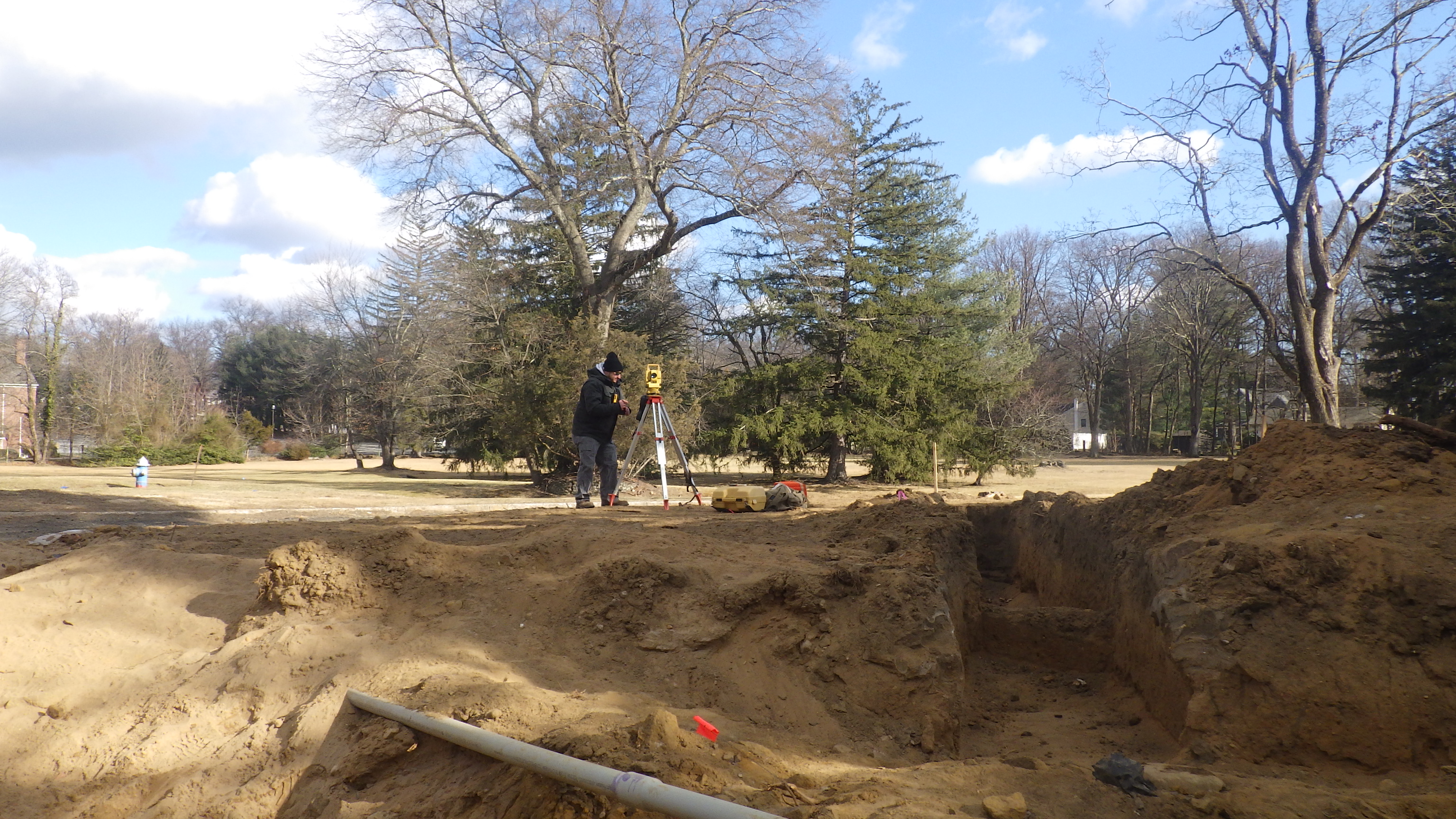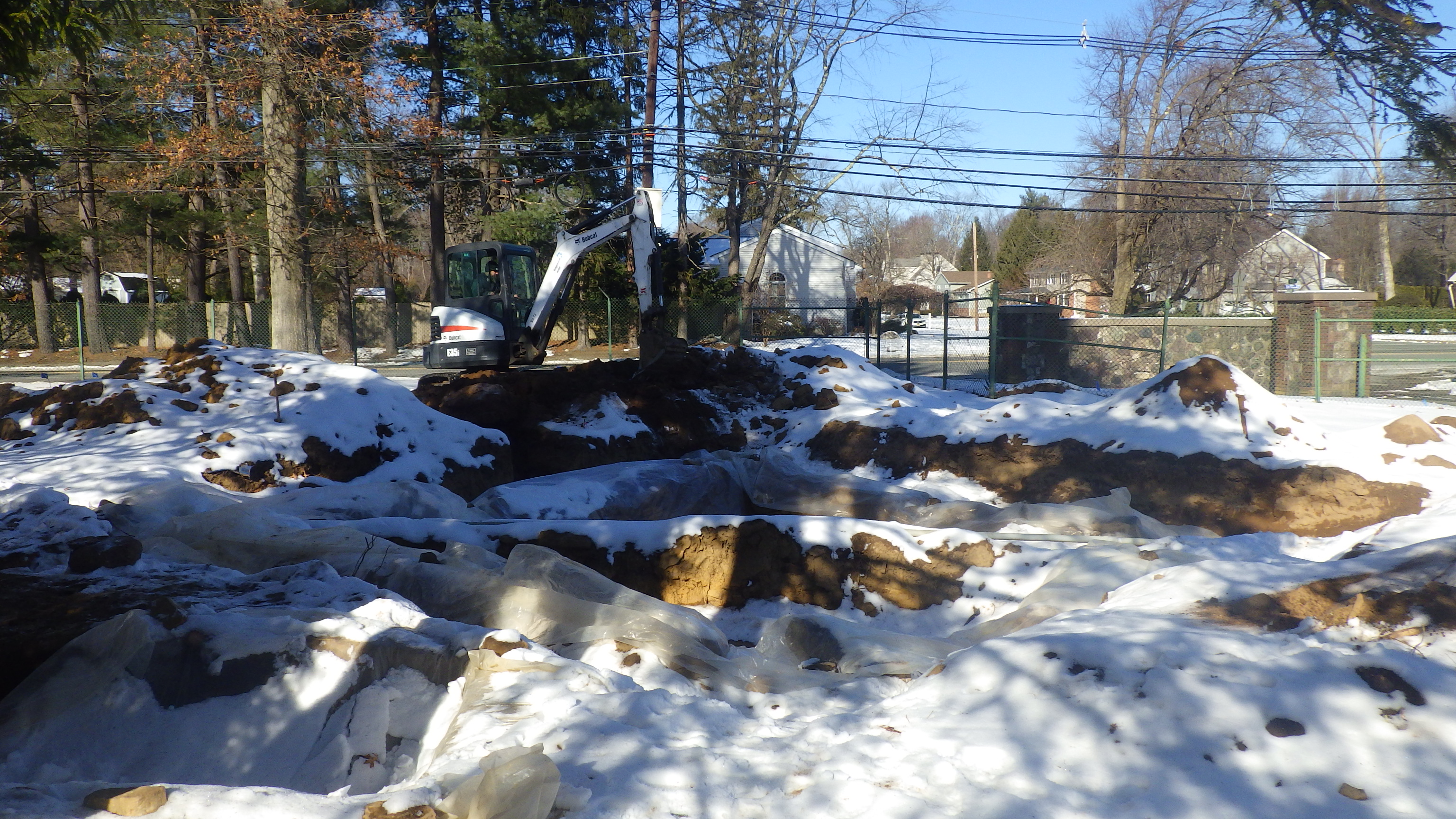Post 2. Field Methods
Field Methods
Fieldwork for the final phase of archaeological investigation of the Daniel Rutan House site began in December 2024. Hunter Research conducted archaeology at the data recovery level, referred to as “Stage 3,” as the goal is to create a permanent record of those portions of the site that will be altered or destroyed by the construction of the new PFAS facility. The fieldwork methodology incorporated shovel tests and trench excavations.
A “shovel test” is an 18-inch-diameter, manual excavation dug by an archaeologist to establish the presence or absence of cultural materials. During the Stage 2 survey earlier in 2024, Hunter Research completed a series of shovel tests on a 25-foot grid. These tests informed the placement of larger “excavation units,” typically 5-foot-square trenches placed on a shovel test identified as having potential features or deposits of archaeological interest. Hunter Research dug trenches with mechanical assistance, in this case with the carefully supervised help of a Ridgewood Water backhoe to strip away modern disturbed soils to more efficiently reach lower, intact archaeological remains.
Archaeologists carefully finished digging the excavation units using shovels, trowels, brushes, dust pans and other small tools, while screening the removed soils through ¼-inch mesh. Hunter Research retained the found cultural materials, i.e., artifacts, and then bagged and tagged them according to their “stratigraphic context,” a coding system used to identify where they came from in each excavation. Archaeologists recorded all data on standardized forms with measured drawings, digital photography, aerial drone survey, digital total station, GPS units and other survey tools.



